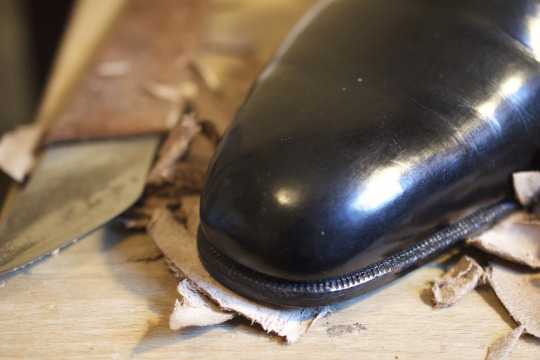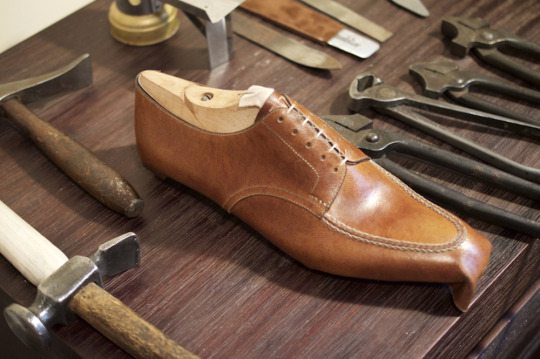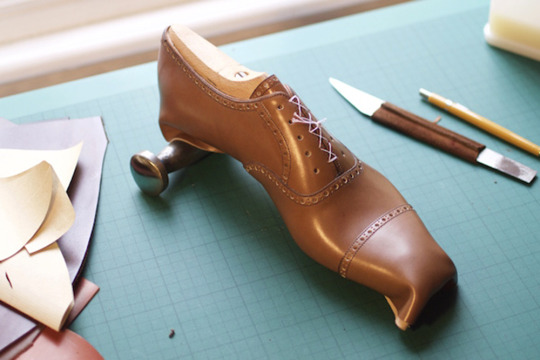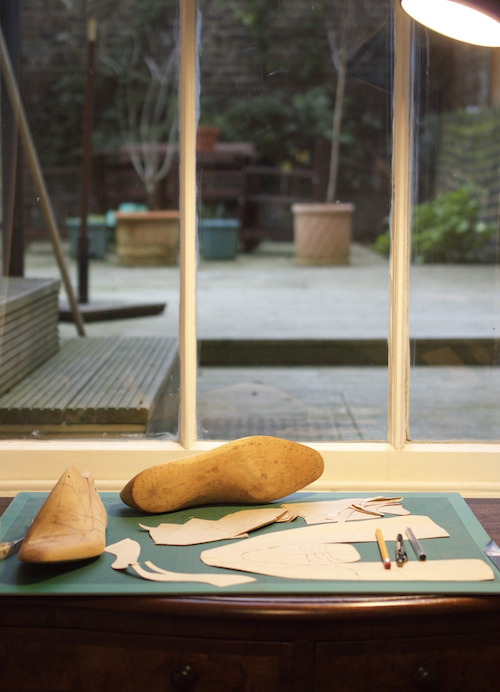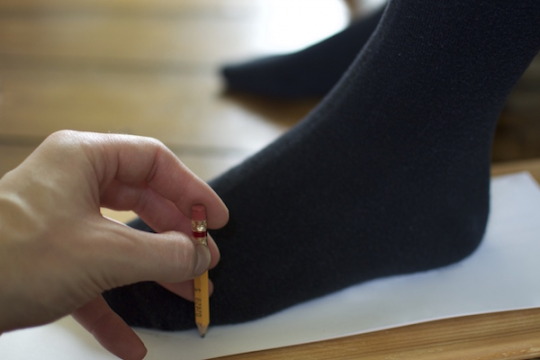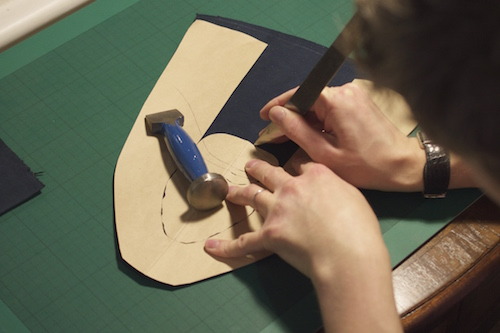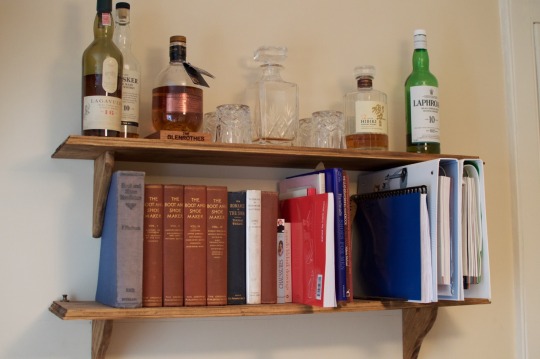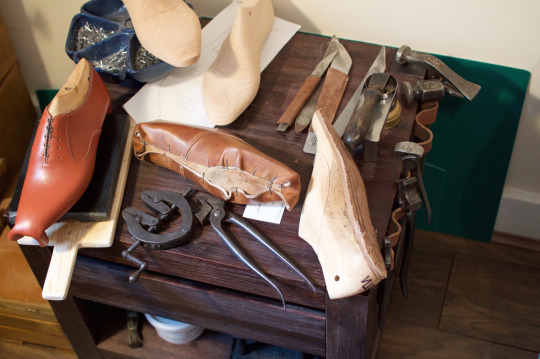
Someone on StyleForum last month commented on how it seems everything has been discovered and there are no more new tailors or shoemakers, or even worthwhile ready-to-wear brands, to talk about. Nothing could be further from the truth. In Naples and London alone, there are plenty of young, independent artisans just starting their own firms. You just have to know where to look.
Recently, a new bespoke shoemaker has emerged in the form of Nicholas Templeman, a former employee of John Lobb of St. James in London. Templeman worked at Lobb for about seven years – serving as the company’s fitter and lastmaker – before striking out on his own. His house style is classic and English, with construction techniques that closely follow West End traditions. That means the last making, lasting, and welting are all done by hand, with only the sewing of the uppers being executed by machine.

Templeman makes his lasts with a large, hinged blade known as a stock knife, which you can see him use in the photo below. Stock knives aren’t used much anymore – even in bespoke houses – because they take up too much room and require too much finesse to operate. Plus, there’s the problem of keeping the blade sharp, which requires another set of skills altogether. Still, they’re useful for chopping down wood for pegs, clogs, and bespoke lasts.
Unlike some makers, Templeman doesn’t make his lasts by modifying already-existing Springline forms. Instead, he starts with a “master form,” which is effectively a large blob of wood that vaguely resembles a last. This gets chopped down by the large stock knife, and then rasped and filed away until it takes its final shape. In the photo above, you can see the “master form” on the left (it comes to him in different sizes, as needed) and then the final last on the right. Starting with an already turned block of wood allows him to get a head start in chopping things down, without compromising any of his creative work.
Templeman says the method for lastmaking isn’t what’s important though. “What’s crucial is that the lastmaker gets a result that works for him,” he says. “I use a stock knife because I like using it, and if I were to stop, it would feel like a bit of history and tradition is being thrown away.”
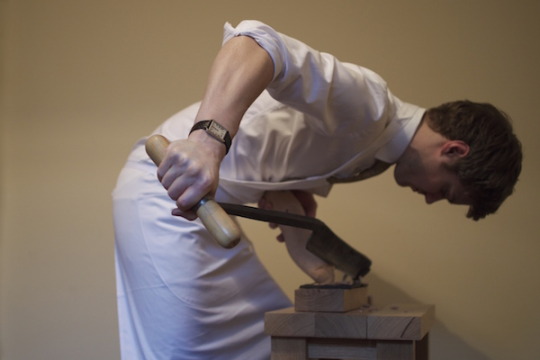
One of the things that strikes me as unique about Templeman’s work – as opposed to the few remaining bespoke British shoemakers – is that Templeman largely does everything himself. Some of the work is sent out to outworkers, such as sewing the uppers when he gets backed up, but all of the important steps (i.e. making the lasts, pulling the uppers, attaching the soles, and fitting the client) are fully done by him. To the degree that you can get a pair of shoes with one maker’s thumbprint on it, this is it.
Templeman plans to visit the US this year, touring through the cities of New York, Boston, and Chicago in October, and then coming back in six months for fittings. If you’re interested in seeing him, you can contact him through his website (even if you’re in another city, it might be worth expressing your interest). For future orders, he says he prefers to conduct fittings. “Beyond just fitting the shoes,” he says, “you have to fulfill the small details in the client’s mind – such as the outline of the lake, length of the toe, and silhouette of the heel.” However, if that’s not possible, he can also take orders over the phone or email, once you have your last made.


